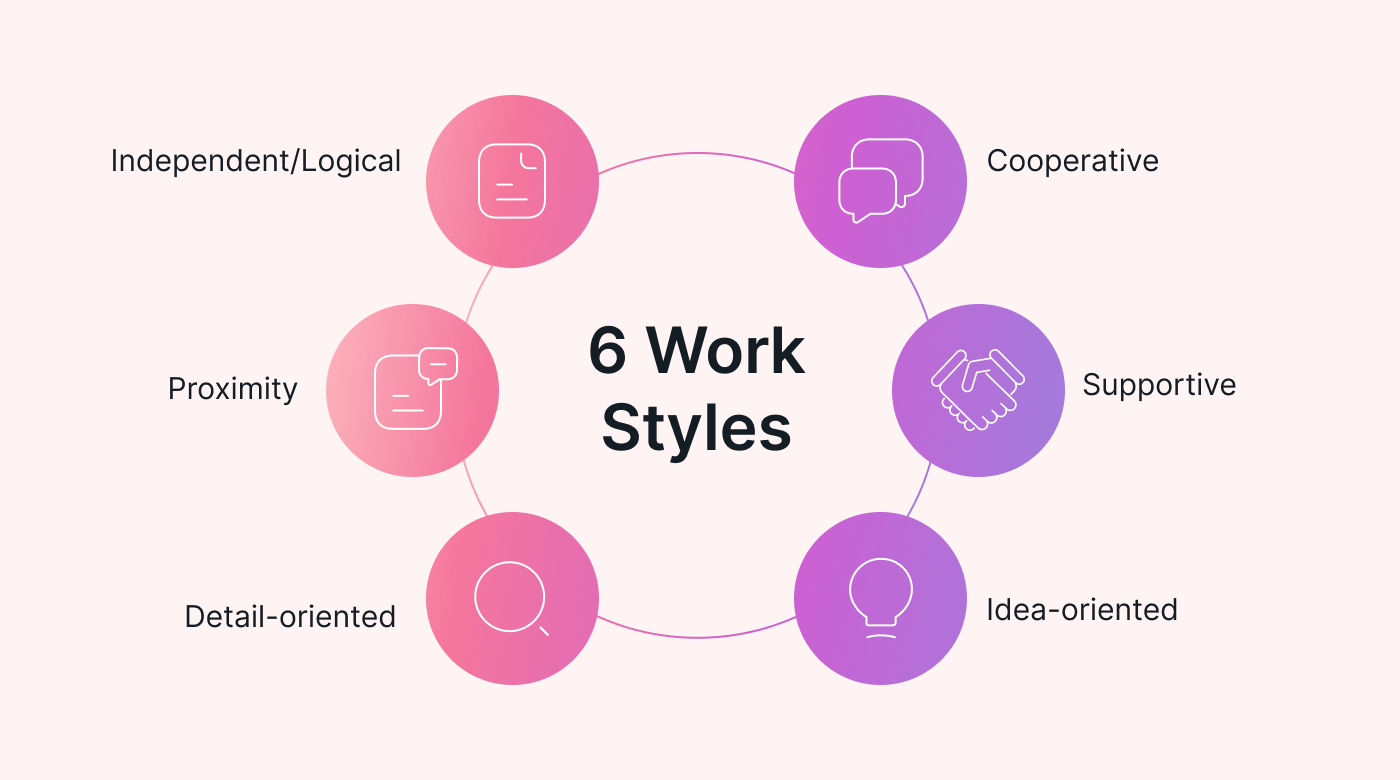In types of work stylesdiverse work environment, understanding different work styles is essential for fostering productivity, collaboration, and job satisfaction. Each individual has a unique approach to tasks, communication, and problem-solving. Recognizing and accommodating these styles can lead to a more harmonious and effective workplace. This types of work styles explore several common wtypes of work styles their characteristics, and how they can be effectively managed and utilized.
The Analytical types of work styles
Analytical types of work styles thrive on data, details, and structured processes. They are meticulous, methodical, and logical, often excelling in roles that require critical thinking and precision. Analytical workers are driven by facts and figures, whether they’re analyzing data sets, creating detailed reports, or developing complex strategies.
These individuals types of work styles prefer a well-organized environment where they can delve deeply into their tasks without interruptions. They value clear instructions and well-defined goals and are excellent at identifying patterns and solving problems. However, their focus on details can sometimes lead to overanalysis or difficulty making quick decisions.
To manage analytical workers effectively, providing them with access to the information and tools they need to perform their tasks is important. Regular feedback and opportunities for professional development can also help them feel valued and motivated. Encouraging them to balance their attention to detail with the broader picture can enhance their effectiveness.
The Pragmatic types of work styles

Pragmatic types of work styles are practical, results-oriented, and efficient. They prioritize getting things done and often prefer a straightforward, no-nonsense approach. These individuals excel in environments where they can take decisive action and see immediate results, making them well-suited for roles in operations, project management, or any field that requires timely decision-making.
Pragmatic workers appreciate clear goals and deadlines and often excel at problem-solving on the fly. Their focus on efficiency means they’re always looking for ways to streamline processes and eliminate unnecessary steps. However, their drive for results can sometimes lead to impatience or a tendency to overlook finer details.
To get the best out of pragmatic workers, provide them autonomy and the freedom to make decisions. Clear communication of expectations and regular progress check-ins help keep them on track. Recognizing their achievements and providing opportunities for leadership roles can also keep them engaged and motivated.
The Creative types of work styles
Creative worktypes of work styles ers are innovative, imaginative, and often unconventional in their approach. They thrive in environments that allow for flexibility and expressing new ideas. Whether developing marketing campaigns, designing products, or crafting compelling content, creative workers bring a fresh perspective to their tasks.
These individuals often prefer a less structured work environment that fosters brainstorming and collaboration. They excel in roles that require originality and out-of-the-box thinking. However, their preference for spontaneity can sometimes clash with the need for routine or strict guidelines.
Managing creative workers involves providing an environment that encourages innovation while maintaining some structure to ensure productivity. Offering flexible work arrangements and opportunities for imaginative exploration can help them thrive. Providing constructive feedback and recognizing their unique contributions can boost their morale and commitment.
The Collaborative types of work styles
Collaborative workers are team-oriented, communicative, and supportive. They thrive on interaction and cooperation, making them invaluable in team settings. These individuals excel in roles requiring coordination, relationship-building, and collective problem-solving, such as human resources, sales, or customer service.
Collaborative workers value open communication and mutual support. They are often skilled at mediating conflicts, fostering a positive team dynamic, and ensuring everyone’s voice is heard. However, their focus on teamwork can sometimes make it difficult for them to make independent decisions or stand out as individual contributors.
Effectively manage collaborative workers, encourage regular team meetings, and provide opportunities for group projects. Foster an inclusive culture where their contributions to team success are recognized and rewarded. Clear roles and responsibilities can help them balance their collaborative nature with individual accountability.
The Independenttypes of work styles
Independent types of work styles are self-reliant, disciplined, and highly motivated. They prefer to work autonomously and are often most productive when given the freedom to manage their time and tasks. These individuals excel in roles that allow minimal supervision and maximum control over their work, such as freelancing, research, or remote work.
Independent workers appreciate clear objectives but prefer to determine their methods. They are often highly focused and capable of deep, sustained concentration. However, their preference for autonomy can sometimes lead to isolation or difficulties in integrating into team-based projects.
Managing independent workers effectively involves providing them the autonomy they crave while ensuring they remain connected to the broader team and organizational goals. Regular check-ins and updates can help maintain alignment and address any issues promptly. Offering opportunities for professional growth and recognizing their achievements can also enhance their job satisfaction.
The Supportive types of work styles
Supportive types of work styles are nurturing, empathetic, and dedicated to helping others succeed. They excel in roles that involve mentorship, customer service, or any position that requires a high degree of interpersonal interaction. These individuals are the backbone of a harmonious workplace, often going out of their way to assist colleagues and foster a positive environment.
Supportive workers thrive in roles where they can provide guidance and support. They are excellent listeners and are often the glue that holds teams together. However, their focus on others can sometimes lead to neglecting their needs or overcommitting to tasks.
To manage supportive workers effectively, ensure they have opportunities to help others and recognize their contributions to team morale and success. Please encourage them to set boundaries to avoid burnout and provide support for their professional development. Regular feedback and appreciation for their efforts can go a long way in maintaining their motivation and well-being.
Conclusion: Embracing types of work styles Diversity
Understanding the different types of work styles is crucial for creating a productive and harmonious workplace. Each style brings unique strengths and challenges, and by recognizing and accommodating these differences, managers can foster a more inclusive and effective work environment. Whether you’re analytical, pragmatic, creative, collaborative, independent, or supportive, there’s a place for every work style to shine.
By tailoring management approaches to suit these diverse styles, organizations can enhance employee satisfaction, improve teamwork, and ultimately drive better results. Embrace the diversity of types of work styles in your workplace, and you’ll create a dynamic and thriving environment where everyone can contribute their best.




